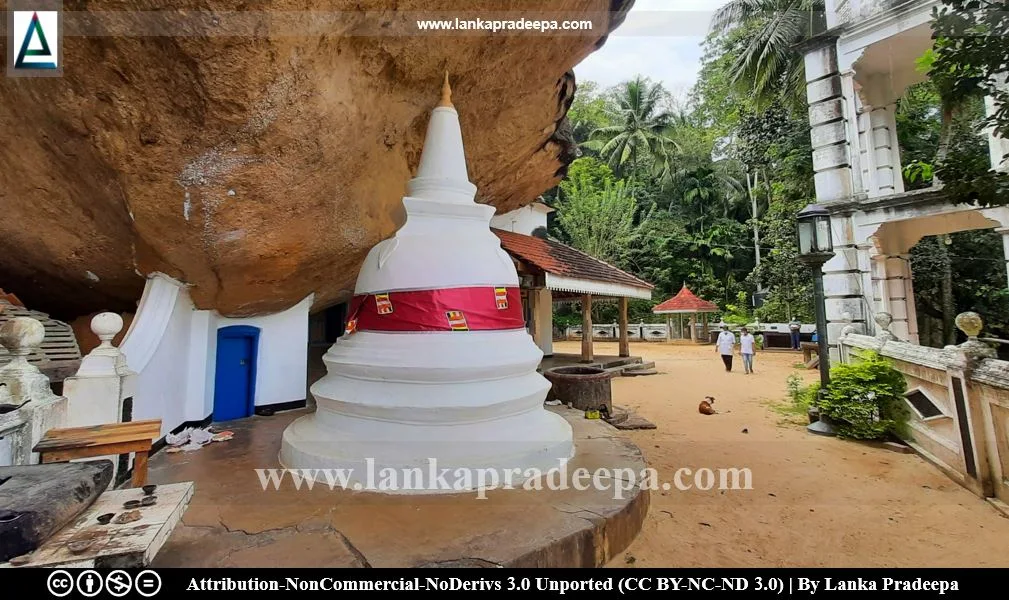
Varana Raja Maha Viharaya (Sinhala: වාරණ රජමහා විහාරය) is a Buddhist temple situated in Mangalathiriya village in Gampaha District, Sri Lanka.
History
The history of Varana Viharaya goes back to the pre-Christian era. An Early Brahmi Rock Inscription belonging to the 2nd-1st century B.C. has been found at the site (Paranavitana, 1970).
The drip-ledged caves at the site are believed to have been used as the abodes of Buddhist monks since the
B.C. era. The other cave temples located in the vicinity of the Varana Viharaya such as Uruwala, Pilikuttuwa, Maligatenna, Miriswatta, and Koskandawala
also have archaeological evidence dating back to the pre-Christian era
and therefore, it has been assumed that this cluster of cave temples
including the Varana have existed as one major cave site during the early part of the Anuradhapura Period.
Inscriptions
A rock inscription written in early-Brahmi characters has been found engraved on the rock known as dig-gala.
Varana Vihara rock inscription
Period : 2nd-1st century B.C.
Script : Early Brahmi
Language : Old Sinhala
Transcript: Bata-Majhimasha batika bata Thishadatasha dane
Translation: The gift of Lord Tissadatta, brother of Lord Majjhima.
Reference: Paranavitana, 1970; The information board at the site by the Department of Archaeology.
Period : 2nd-1st century B.C.
Script : Early Brahmi
Language : Old Sinhala
Transcript: Bata-Majhimasha batika bata Thishadatasha dane
Translation: The gift of Lord Tissadatta, brother of Lord Majjhima.
Reference: Paranavitana, 1970; The information board at the site by the Department of Archaeology.
The temple
The temple mainly consists of three terraces namely; the Pahala-maluwa (the lower terrace), the Meda-maluwa (the middle terrace), and the Ihala-maluwa (the upper terrace) The lower terrace consists of a number of buildings and monuments such as the relic-house, the rock-inscription, drip-ledged rock caves, monks' dwellings, the alms-hall, the library, the preaching hall, etc. The ancient cave temple (the image house), and the Stupa are found in the middle terrace. The image house contains a number of Buddha statues in seated and standing positions. The ceiling and the walls of the cave have been decorated with floral designs and modern-day paintings related to the history of the temple. A Stupa, a Bodhi tree, a cave temple (an image house), and monks' dwellings are found on the upper terrace. A few inscriptions denoting the dates of the 19th century and the names of people are found on the surface of the drip-ledged cave at the upper terrace.
A protected site
The ancient image house of Warana Raja Maha Vihara situated in Thihariya, in the Divisional Secretary’s Division of Gampaha is an archaeological protected monument, declared by a government gazette
notification published on 1 November 1996.


 .
.
References
1) Paranavitana, S., 1970. Inscription of Ceylon (Vol. I). Department of Archaeology Ceylon. p.86.
2) The Gazette of the Democratic Socialist Republic of Sri Lanka, no: 948. 1 November 1996.
Location Map
This page was last updated on 8 January 2023


